[[{“value”:”
Thank you for reading this post, don't forget to follow and signup for notifications!
The Beretta 20X Bobcat is a complete redesign of their classic tip-up barrel pocket pistol. Beretta has updated nearly everything – the sights, trigger, magazines, and more. But is it any good? Find out in Part Two of Project Rimfire!
Details are in the video below, or keep scrolling for the full transcript.
Hey everybody, I am Chris Baker from Lucky Gunner and today we’re going to talk about the Beretta 20X Bobcat pocket pistol. It’s Part Two of Project Rimfire! Over the next several months I will be evaluating an unreasonable number of pistols and revolvers, all chambered for .22 Long Rifle.
I’m dividing them into six different categories. We’re starting with pocket pistols. For each category, I’m picking a few of the more interesting options to highlight for individual review videos like this one. Then I’ll do a category roundup video to compare the options side by side.
Let’s look at the Beretta 20X Bobcat. It was released in late 2024 as the newest evolution of their series of tip-up barrel pocket pistols. It’s a complete redesign of the 21A Bobcat, which was in production from 1984 until this year.
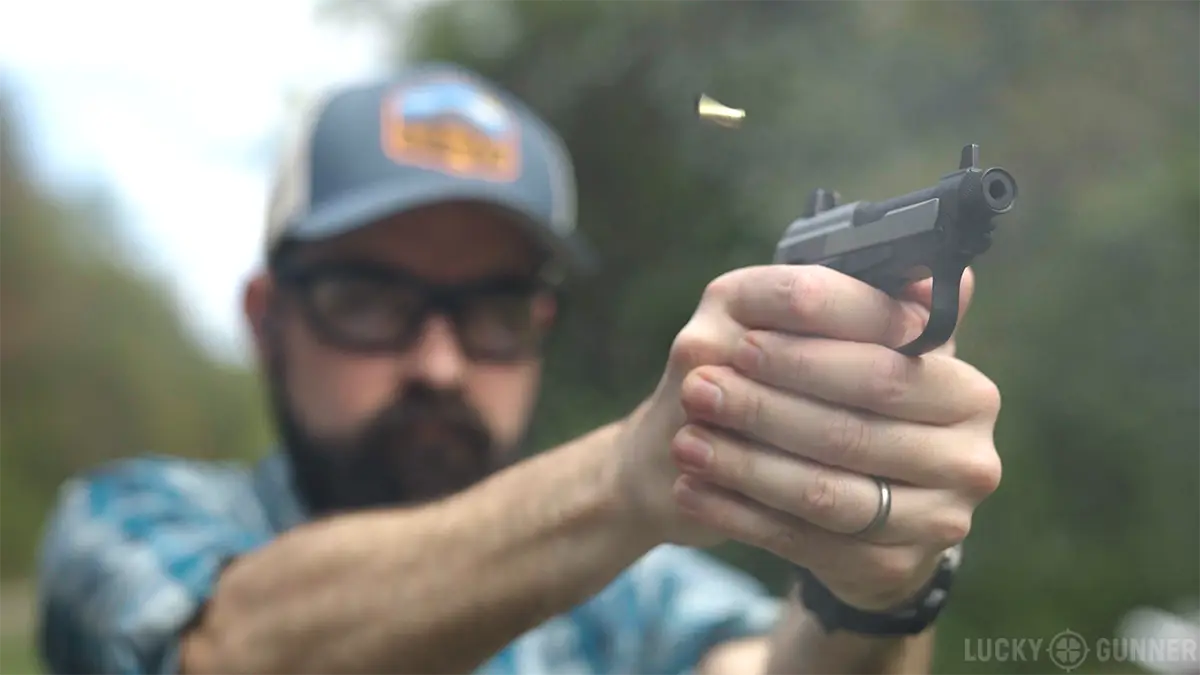
The 21A was originally intended to be a super-concealable carry gun. Of course, being a .22, it’s a lot more enjoyable to shoot than most pocket-sized centerfire pistols. Some people keep them around purely as fun range guns. A few years ago, Beretta leaned into this with the 21A Covert, which has a threaded barrel and wider, more ergonomic grip panels.
Other than that, the 21A has gone more or less unchanged for 40 years and while it’s got a lot of charm, it could use some updating. Has Beretta addressed the old Bobcat’s shortcomings with the new 20X? Let’s take a look at what’s different.
Beretta 20X Bobcat vs. 21A Bobcat
We’ll start with the obvious change: the 20X has real sights. You can get it like this one with the threaded barrel and extra tall suppressor-height sights. Or they have a non-threaded version with standard sights. Shorter, but still a huge improvement over the tiny hump and notch sights on the 21A. The sights are removable on both versions of the 20X. And if you want to change the sights your gun came with, they are available separately on Beretta’s website.
Some of Beretta’s demo guns have shown the 20X with the rear sight replaced with an optic plate for a micro red dot. Those are not available yet, but I’m told they are in the works.
The G10 grip panels are pretty wide – even a little wider than the 21A Covert grips. Comfortable, but not as pocket-friendly. Some variants come with polymer grips instead. I’m not sure if they’re the same width.

The mag release has moved from the middle of the grip panel to a more conventional position behind the trigger guard. The redesigned mags are all polymer (except for the spring) and a bit larger than the old ones. They extend past the grip and give you more to hang on to. The capacity is now 8+1 instead of 7+1. They feel kind of fragile but I haven’t had any issues with the two that came with this gun.
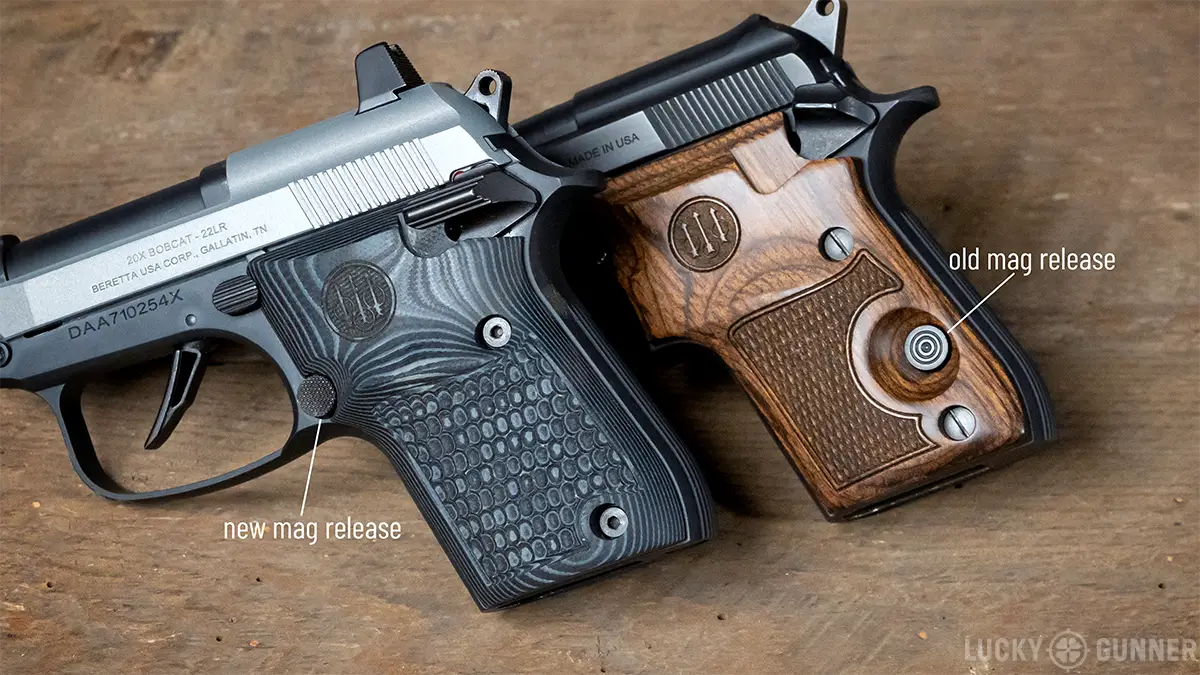
The manual thumb safety is now longer and, I would say, a lot more usable. To release the barrel, you press this button, which replaces the pivoting lever from the 21A.
The trigger guard is now integrated into the frame like most guns. On the old design, it’s a separate piece that actually serves as the barrel spring. That whole mechanism has been redesigned. The spring is now behind the pivot pin in the frame.
The entire action has been totally overhauled to make the double action trigger pull lighter. I want to say the length of travel is a little shorter too, but it might just feel that way because of the flat faced trigger. Either way, it’s a noticeable improvement over the 21A.
Beretta 20X at the Range
But how does it shoot? Well, it’s every bit as fun as the old Bobcat, except now I can actually see where I’m aiming. It’s a fantastic suppressor host. And now, with the sights, you could conceivably use it to dispatch the occasional backyard pest.
Sure, you could use any one of the dozens of larger .22s for that task. But there is just something about shooting a tiny suppressed .22 that’s immensely satisfying.
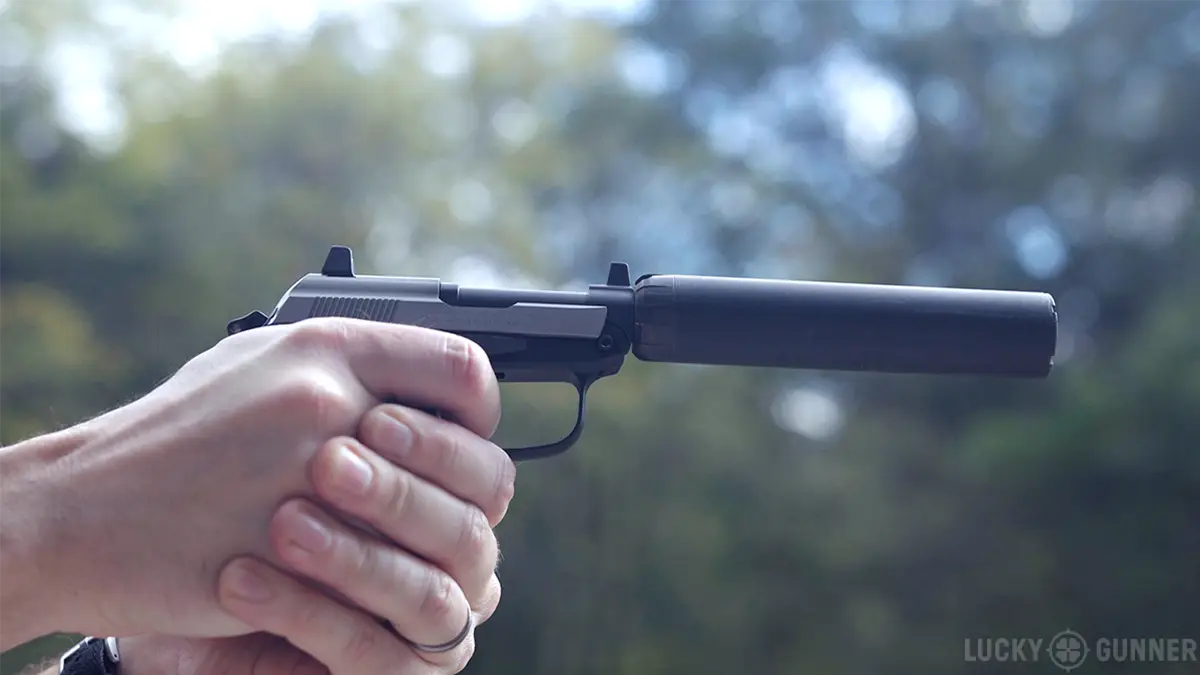
In the Project Rimfire intro video, I mentioned that I will be running each gun through a series of three shooting tests: one for speed, one for accuracy, and a practical test. But you will have to wait until the pocket pistol roundup video to see the results. However, I’m also tracking reliability, so let’s talk about that.
Reliability
I’m going to give each gun a grace period of 200 rounds to break in a little bit. Then at some point after I’ve fired at least 200 rounds through that gun, I will thoroughly clean it and fire 100 rounds of CCI Round Nose Mini Mags. Then I’ll give it another quick cleaning and fire 100 rounds of CCI 40-grain Lead Round Nose Standard Velocity. In my experience, if a .22 doesn’t fire and cycle reliably with at least one of those two loads, it’s probably not going to run well with anything.
For those 200 rounds, I will record any stoppage, malfunction, or mechanical issue of any kind. If I fire any additional rounds through the gun after that, I’ll try to make a note of it, but I won’t be tracking it quite as meticulously. Running 200 rounds through a clean gun is not exactly an epic torture test. But it’s enough to give us a very general idea of which of these guns are most likely to have reliability challenges.
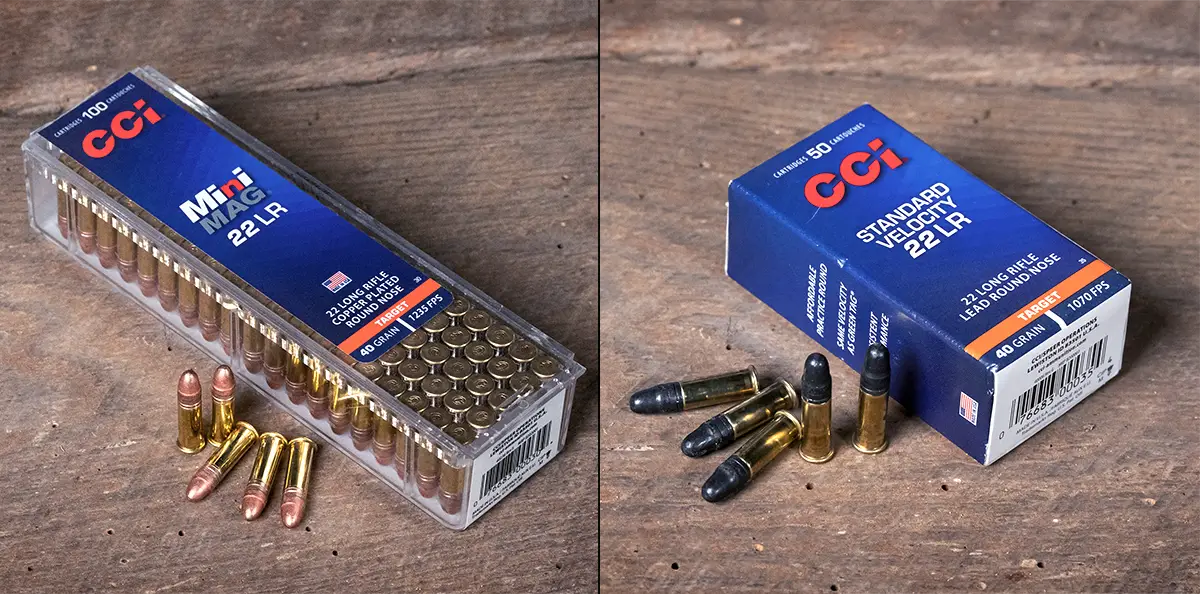
With the Mini-Mags, the Beretta 20X had one failure to fire and one failure to eject. With Standard Velocity, there was a single failure to eject and that was within the last 10 of the 100 rounds.
The 20X seems to run well when it is clean. But fouling builds up quickly in the feed ramp and chamber area and on the face of the slide. Make sure you keep those areas clean. Pay special attention to this recess in the chamber where the cartridge rim sits. Make sure you get all the crud out of there.
To be fair to the 20X, none of the .22 pocket pistols I’m testing have run 100% for me. As a category, pocket pistols are the least reliable modern semi-automatics. When you chamber one for a cartridge that’s notorious for being dirty and unreliable, you’ve got a challenging combination.
Now, I’m not sure I’ll do this with every pistol that has a threaded barrel, but after that reliability test, I threw on a suppressor and fired another 200 rounds. I did not clean the gun first. Zero stoppages. Actually, I was having so much fun, I kept firing and lost count. But it was at least 200. The extra back pressure from the suppressor really helps the gun cycle more reliably.
A Worthy Successor
I have seen suppressor-compatible holsters for the 30X like this one from ANR Design. The 20X frame is the same size, so it should work. Carrying one of these suppressed with a red dot would be a fantastic setup for pest control or a spontaneous plinking session out in the woods or something. I’m sure you guys can think of a dozen other reasons why that would be fun or useful.
Would I trust my life to the Beretta 20X Bobcat? No, at least not this one. But it’s got a lot going for it, especially if you own a .22 suppressor, or you’re looking for an excuse to buy one. Overall, I think it’s a worthy successor to the 21A and I love that Beretta is continuing to breathe new life into their classic tip-up barrel designs. Next up, we’re going to be looking at Taurus’ take on the tip-up rimfire pistol: the 22TUC. Keep an eye out for that in our next installment of Project Rimfire.
“}]]


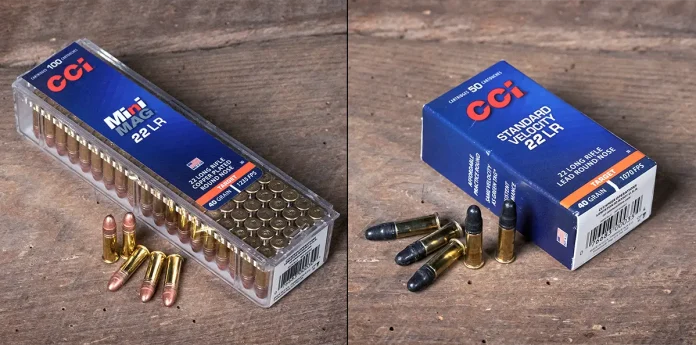
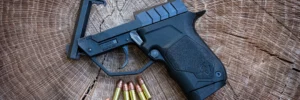 Taurus 22TUC: Budget Price, Zero Compromises (Well, Maybe One)
Taurus 22TUC: Budget Price, Zero Compromises (Well, Maybe One)
 Beretta 80X Cheetah: The Compact Comeback
Beretta 80X Cheetah: The Compact Comeback
 Let’s Test (Almost) All the .22 Pistols
Let’s Test (Almost) All the .22 Pistols
